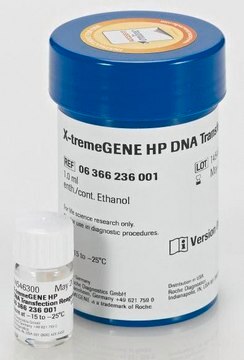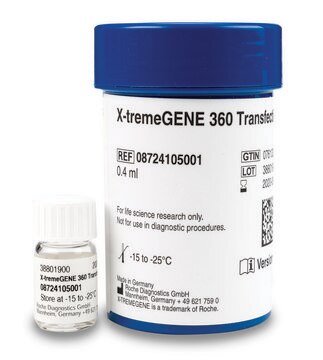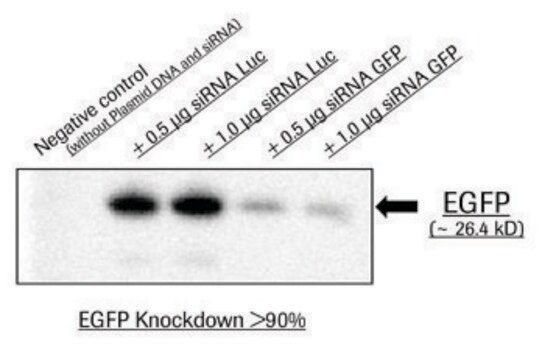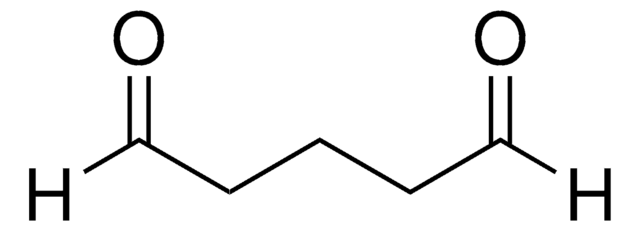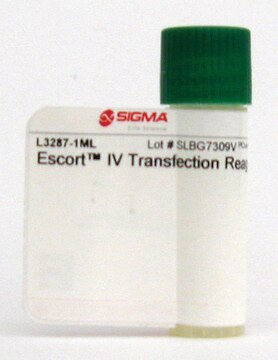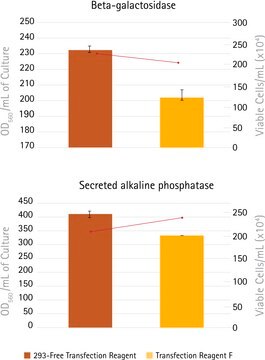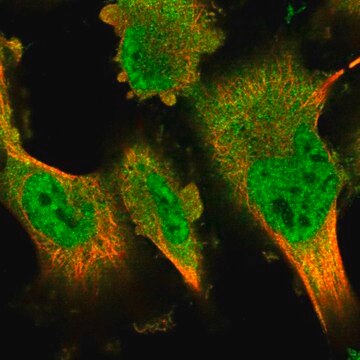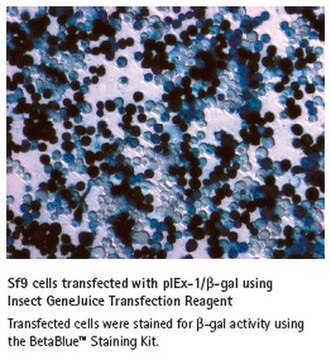XTG9-RO
Roche
X-tremeGENE™ 9 DNA-Transfektionsreagenz
Polymer reagent for transfecting common cell lines
About This Item
Empfohlene Produkte
Qualität
for molecular biology
Qualitätsniveau
Form
liquid (aqueous solution)
Verwendung
mL (suitable for 165 transfections)
Verpackung
pkg of 0.4 mL (06365779001)
pkg of 1.0 mL (06365787001)
pkg of 5 × 1.0 mL (06365809001)
Hersteller/Markenname
Roche
Methode(n)
transfection: suitable
Lagertemp.
2-8°C
Verwandte Kategorien
Allgemeine Beschreibung
Anwendung
X-tremeGENE™ 9 DNA-Transfektionsreagenz eignet sich zum Beispiel gut für die folgenden zellanalytischen Anwendungen:
- Expression von rekombinanten Proteinen zur Funktionsanalyse
- Physiologische Untersuchungen von Stoffwechselwegen
- Analyse von regulatorischen Sequenzen mit Reportergen-Assays
- Genexpressions-Assays
- Krebsforschungsstudien
- Target-Evaluierung
Leistungsmerkmale und Vorteile
- Erzielen physiologisch relevanter Ergebnisse mit einem Reagenz, das eine äußerst geringe Zytotoxizität für die maximale Lebensfähigkeit der Zellen nach der Transfektion aufweist.
- Einsparen von Zeit und vielen Arbeitsschritten, denn das X-tremeGENE 9 DNA-Transfektionsreagenz muss lediglich verdünnt, mit der Plasmid-DNA inkubiert und die Mischung direkt auf die Zellen (mit oder ohne Serum) pipettiert werden.
- Keine zeitraubenden Optimierungsverfahren mehr in häufig verwendeten Zelllinien.
Qualität
Physikalische Form
Sonstige Hinweise
Rechtliche Hinweise
Ähnliches Produkt
Signalwort
Danger
H-Sätze
Gefahreneinstufungen
Eye Irrit. 2 - Flam. Liq. 2
Lagerklassenschlüssel
3 - Flammable liquids
WGK
WGK 1
Flammpunkt (°F)
334.4 °F
Flammpunkt (°C)
168 °C
Analysenzertifikate (COA)
Suchen Sie nach Analysenzertifikate (COA), indem Sie die Lot-/Chargennummer des Produkts eingeben. Lot- und Chargennummern sind auf dem Produktetikett hinter den Wörtern ‘Lot’ oder ‘Batch’ (Lot oder Charge) zu finden.
Besitzen Sie dieses Produkt bereits?
In der Dokumentenbibliothek finden Sie die Dokumentation zu den Produkten, die Sie kürzlich erworben haben.
Kunden haben sich ebenfalls angesehen
Artikel
Automation is used for many applications to reduce variation caused by manual handling and to obtain reproducible results in high-throughput assays. High-throughput applications, such as knockdown studies or target screenings, often include cell transfection.
Small inhibitory RNAs (siRNAs) have become the focus of interest in many laboratories. For the first time, these molecules offer an easy way to knock down the expression of selected genes in mammalian cells without having to resort to classical gene knockout techniques.
Transfection is the introduction of DNA, RNA, or proteins into eukaryotic cells and is used in research to study and modulate gene expression. Thus, transfection techniques and protocols serve as an analytical tool that facilitates the characterization of genetic functions, protein synthesis, cell growth and development.
This brief webinar provides an overview of what transfection is and the methods that are used to introduce DNA or RNA into eukaryotic cells.
Protokolle
Plate cells approx. 24 hours before transfection making sure cells are at optimal concentration (70 – 90 % confluency).
Cell preparation for transfection Plate cells approx. 24 hours before transfection making sure cells are at optimal concentration (70 – 90 % confluency).
Transient co-transfection of plasmids is a method that is commonly employed for cellular protein-protein interaction studies, transcription factor studies, and gene knockdown studies using shRNA encoding plasmids.
Protocols for Transfecting Common Cell Lines with X-tremeGENE™ Transfection Reagents
Verwandter Inhalt
Browse our convenient transfection reagent selection guide to match the best reagent for your specific cell line and application needs.
Unser Team von Wissenschaftlern verfügt über Erfahrung in allen Forschungsbereichen einschließlich Life Science, Materialwissenschaften, chemischer Synthese, Chromatographie, Analytik und vielen mehr..
Setzen Sie sich mit dem technischen Dienst in Verbindung.